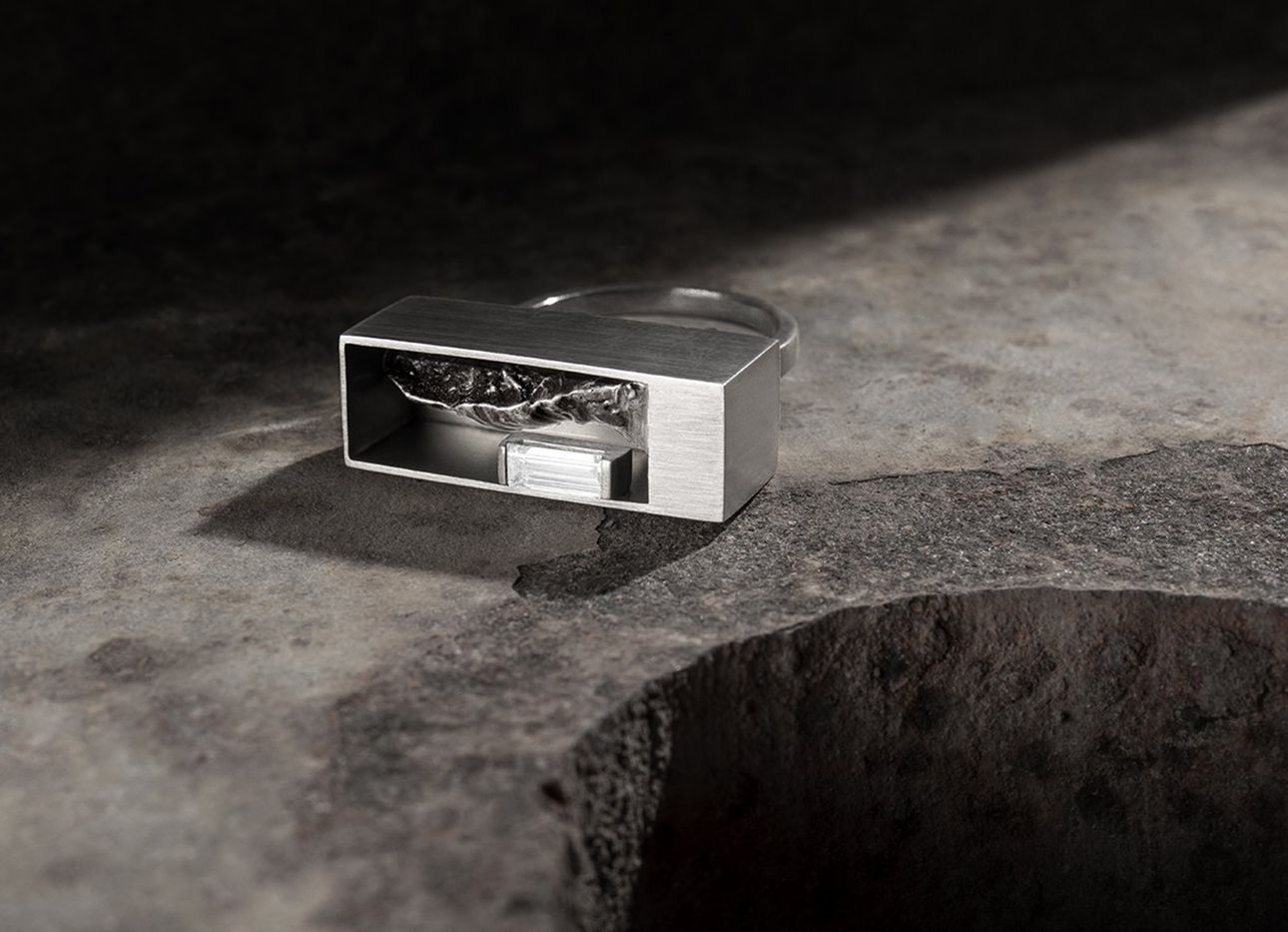
Jewelry Designer Monique Péan Creates a Feat of Meteoric Proportions, Literally
Jewelry designer Monique Péan shares a window into the geologic formations, cosmic artifacts, and natural sciences that inspired her latest series, Cosma 67°48”x 23°68”, which showcases the Muonionalusta—an ancient protoplanet predating the earth itself.
When did you first encounter the Muonionalusta meteorite and become interested in it?
During my travels in Scandinavia, and I’ve been collecting these specimens since. As one of the solar system’s oldest objects, Muonionalusta meteorite slices are approximately 4.6 billion years old, predating the formation of the Earth. My most recent series traces the path from its protoplanetary source in orbit to its final impact site, on the remote banks of the Muonio river in northern Sweden and Finland.
What specifically intrigued me about the material was its otherworldly geometric etching—known as the Widmanstätten pattern—which can be seen when the specimen is dissected. To understand more about these meteorites, I work with scientists to identify and study the provenance of each specimen, and learned that the octahedrite relief is the result of a process called “slow cooling,” in which the meteorite’s initially molten composition of ferrous, nickel, and kamacite crystallizes over millions of years, as the rock careens through outer space. It’s a process that cannot be replicated in a laboratory, highlighting the significance and authenticity of these ancient relics found in our universe.
What’s your design process? Where does your research into materials begin?
Mostly in my sketchbook before I find a way to transcribe my charcoals and watercolors into a physical form. I’m drawn to rare prehistoric and sustainable materials that transport us back in time, and I collaborate with artisans and geologists to acquire sustainable materials according to fair-trade guidelines. In addition to the economic support that these relationships provide to the artisans, there’s also the benefit that comes from creating pieces that don’t have the significant ecological impact of traditional fine jewelry and objects.
Travel plays a significant part in my research, too. Over the years, I’ve cultivated relationships with local artisans in the United States, Guatemala, Peru, the Arctic Circle, Norway, and French Polynesia, among other regions. Most recently, on a trip to Chile and Easter Island, I discovered naturally formed Chilean cosmic obsidian, and right now I’m working with indigenous Rapa Nui artisans to hand-carve the material, which is volcanic glass that has been formed from quickly cooled lava flow.
Your work takes the unfathomably large—geology, the cosmos, and outer space—and brings it down to an intimate scale. How do the two relate in your mind?
I’m inspired by the intersection of materiality, temporality, and space, and have been working with materials like fossilized dinosaur bone, fossilized walrus ivory, and meteorites since I started my studio practice over a decade ago. I was originally drawn to these materials by their expressive, naturally formed patterns, hues, and reliefs—as well as the way in which they challenge our circadian perception of time, preserving millions or billions of years in their mineral structures and compositions.
The materials I work with capture eons of geologic history—and in the case of meteorites, cosmogenic history—by presenting an imprint of an intangible past. I like to believe my handcrafted pieces preserve these natural wonders in works of art that can be passed down through generations, parallel to how they have been preserved in remote regions of our planet.